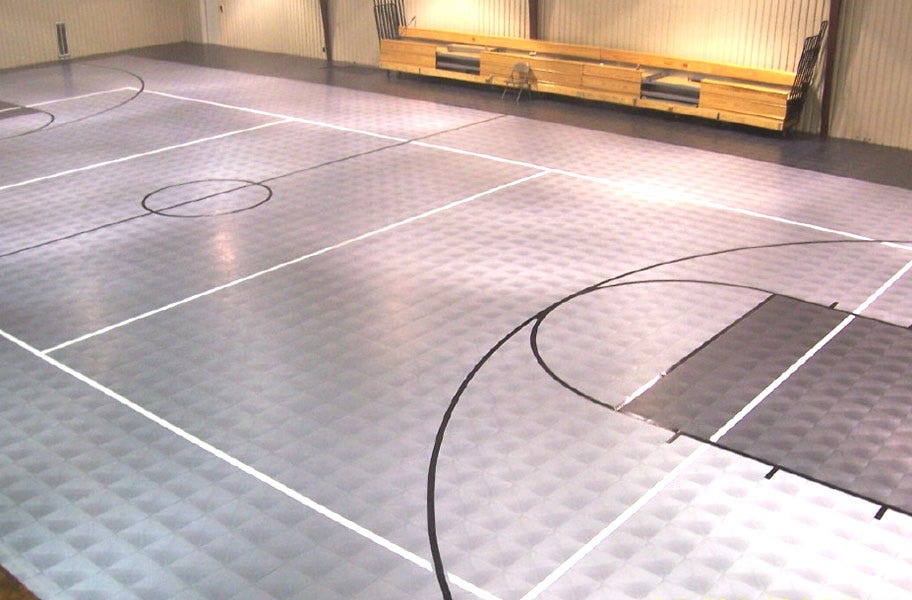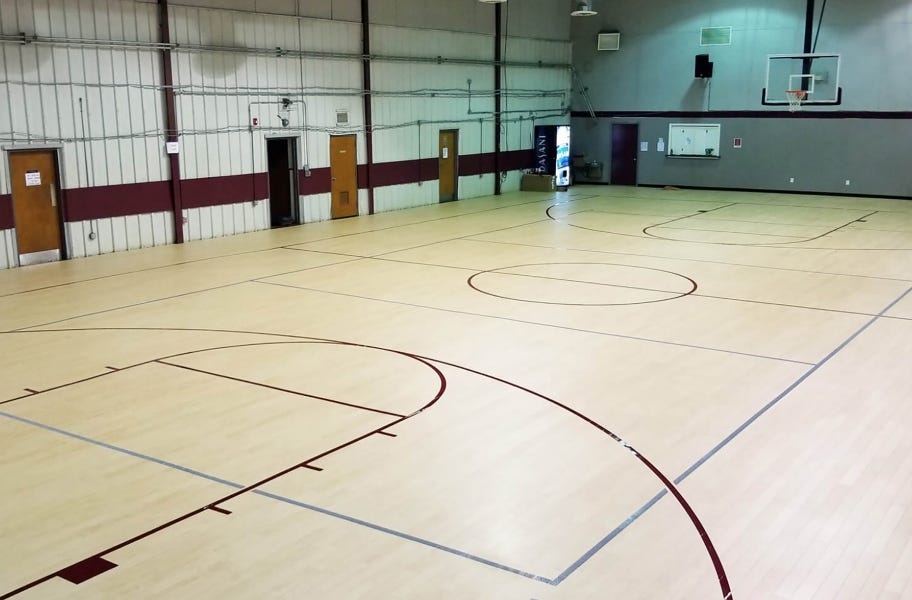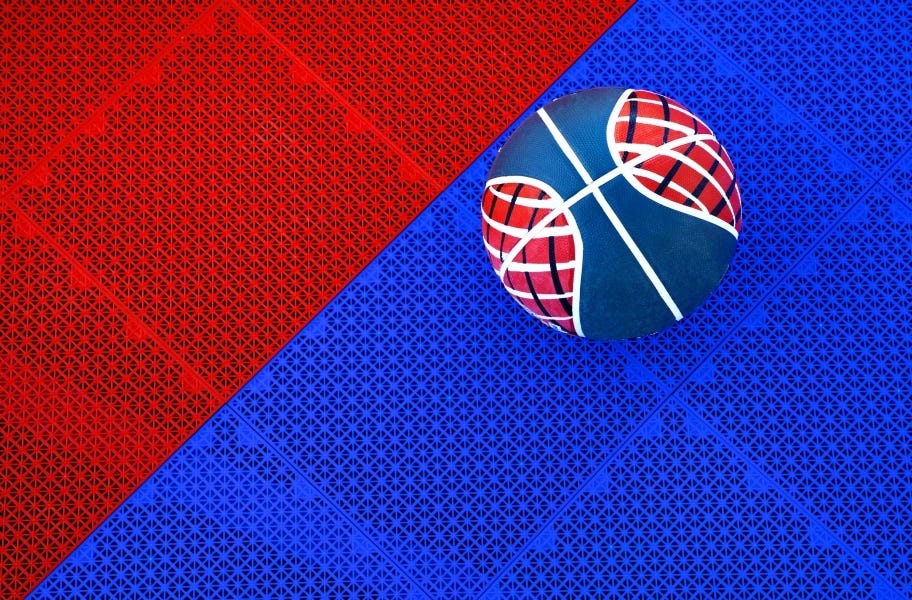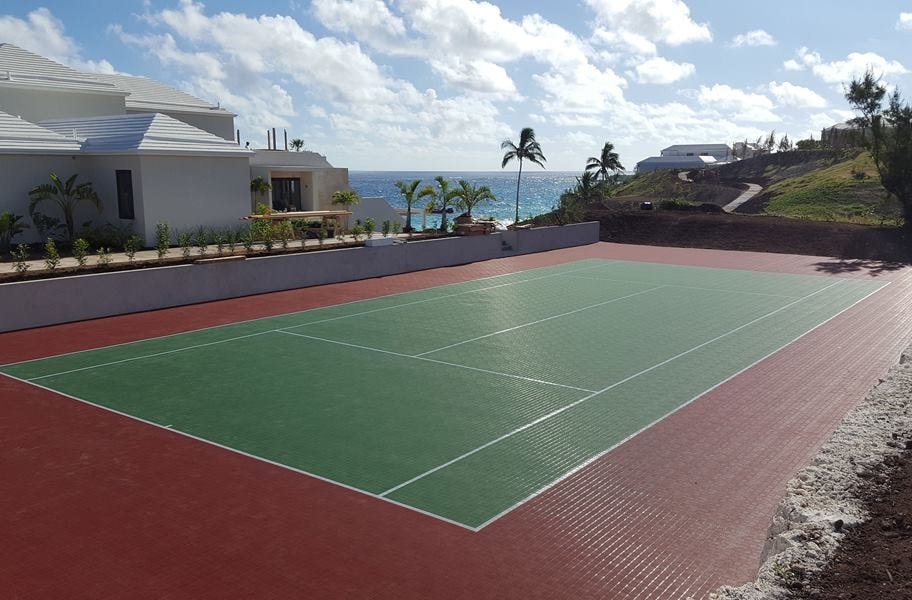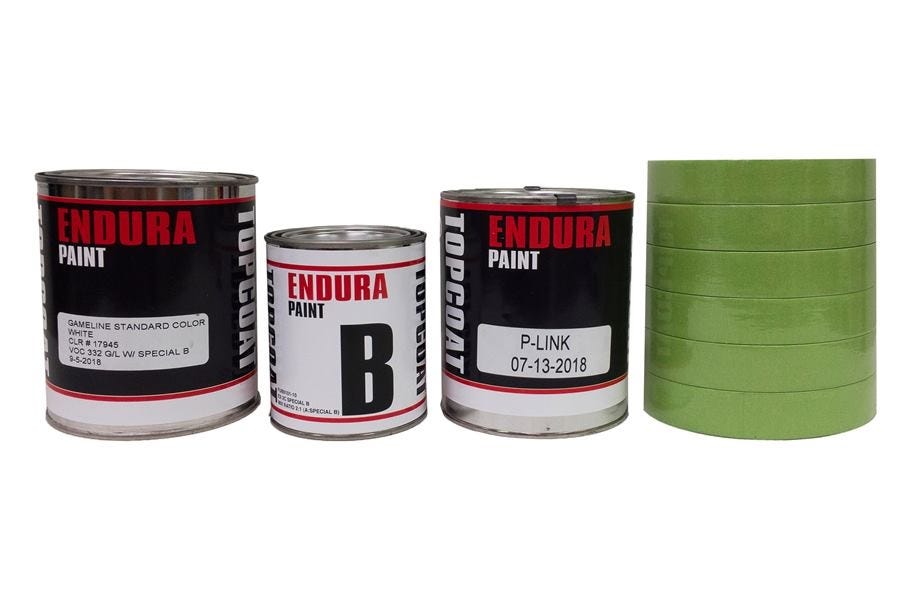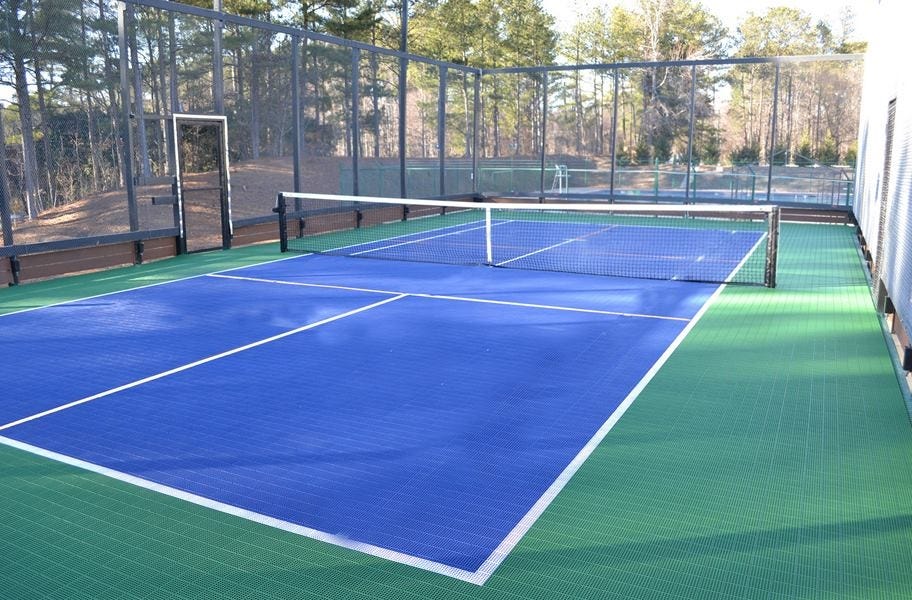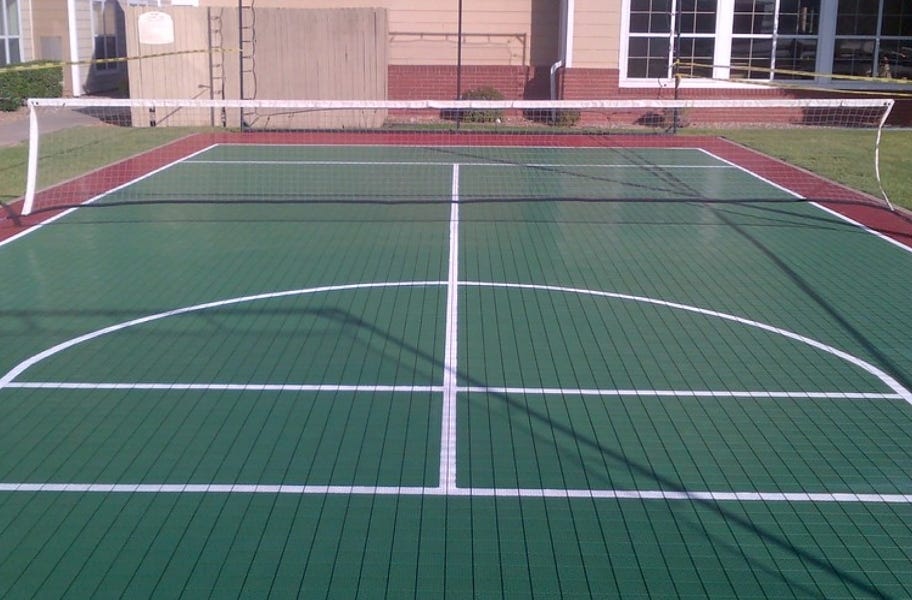
What court flooring is best for you? To answer that question, you need to understand how sports flooring works, and the different types available to you.
You might have done a lot of research to decide on the right court flooring, but maybe you still have a few lingering questions before you make a purchase. This guide to all the most frequently asked questions will get you the answers you need.
Explore the differences between court tiles and planks, learn what court flooring is made of, discover how to install and take care of it, and much more in this helpful FAQ.
| Related Content >> Court Flooring Buying Guide |
What is Court Flooring? Learn the Basics
Court sport floors are made from tiles or planks designed to provide the ideal playing surface, both indoors and outdoors. They provide optimal traction and impact-absorption.
Typically, court flooring is made from hard plastic, vinyl, or wood. These materials absorb shock and add more spring to the playing surface compared to concrete. Our court flooring comes in a range of colors and some wood looks so you can have a stylish court.
What Types of Court Flooring Are Available?
There are two main types of court flooring: tiles and planks. They each come with their own benefits and styles.
What Are Court Floor Tiles?
Court tiles are modular plastic flooring tiles that fit together with interlocking edges. They’re easy to install and are available in a wide range of colors.
Made from a durable plastic that doesn’t easily fade and offers slip-resistance, they’re great for use indoors and outdoors.
What Are Court Floor Planks?
Court planks are made from real hardwood or wood-look vinyl. With planks, you get the style and professional feel of traditional wood court floors.
Though they look like the usual hardwood floor, they’re way easier to install, with either a nail-free clip-in installation or the same peg and loop method as the tiles.
What is Court Flooring Made of?
Vinyl
Vinyl court planks are made from the same PVC material as luxury vinyl planks. Like, luxury vinyl planks, court planks come with beautiful wood-look surfaces. Our vinyl flooring features the DIY-friendly peg and loop installation system. Note: vinyl court flooring is intended for indoor use only.
Plastic
Made from a durable kind of plastic called polypropylene, hard plastic court tiles handle impacts, chemicals, and extended UV exposure without fading or getting damaged. You can use plastic tiles for indoor and outdoor courts.
Wood
Wood flooring is the traditional material for indoor courts. Our wood flooring offers an innovative installation system that’s way easier than typical wood planks. You can clip the floor together, no nails necessary, so you can remove it and reinstall elsewhere if you want to. Wood court flooring only works inside, because it can be damaged by excessive moisture.
What Is the Difference Between Indoor and Outdoor Court Flooring?
Indoor and outdoor court floors are designed to thrive in different environments.
Outdoor court tiles
This flooring is made from hard plastic that resists fading in the sun. The surfaces are vented to allow water to flow through the tiles when it rains, creating a safer, slip-resistant floor.
Indoor court flooring
Indoor court flooring can be made of hard plastic, vinyl, or even wood. These courts have smooth, non-vented surfaces, and aren’t weather-resistant like outdoor courts.
What Are the Benefits of Court Flooring?
- Shock-absorbance: Compared to concrete or asphalt, court flooring provides more support for your joints as you jump and run.
- Slip-resistance: Even if your court is outdoors in the rain, plastic court tiles will provide a safe, slip-resistant surface.
- Fade-resistance: Our court tiles come in a huge variety of bold colors that won’t fade even after extended exposure to the sun.
- DIY-Friendly: No need to hire a pro! Install your court yourself with easy interlocking floors.
- Durable: Your court needs to handle a lot of traffic, and this flooring is up to the challenge. It’s designed to handle tons of wear and tear.
Court Flooring Installation
What Is the Best Subfloor for Court Flooring?
Court flooring can be installed both indoors and outdoors, depending on the type. You need to have the right subfloors to make sure the installation is a success. Here are some tips to help you prepare for court installation.
Subfloors for Indoor Courts
To prepare an indoor court surface, make sure it is clean and dry. You can install indoor court tiles over any solid subfloor, including concrete, tile, wood, and laminate. There shouldn’t be any structural issues like cracks or dips.
Low-pile commercial carpets may be acceptable, but any plush carpeting needs to be removed first. If the carpet can be removed, you can also place 1/4” plywood over the carpet to add stability. For extra impact absorption and bounce, place a rubber underlayment before installation.
Subfloors for Outdoor Courts
An asphalt or a concrete pad is one of the best subfloors for court flooring. You can also build a containment area for compacted gravel that will cover the dimensions of the court.
If you do happen to have concrete or asphalt, make sure it is in good shape, with no large cracks. Make sure the concrete pad is large enough to maintain at least a 3/4” expansion gap around the edges of the court.
| Related Content >> How to DIY Install Court Flooring |
How Do You Install Interlocking Court Flooring?
For court tiles or planks with the peg and loop installation system, follow these simple steps.
- Start in a corner, placing the first tile or plank with the peg sides facing the outside.
- Snap the tiles or planks together by inserting the pegs into the adjacent loops. Step down on the connected edges to lock them together.
- Continue connecting the flooring, leaving a 3/4” gap between the floor and any walls or obstructions. This allows for expansion and contraction.
- When you come up to an edge, wall, or object, it’s easy to cut the flooring to fit. Just measure the area and cut the flooring with a tile cutter or table saw.
- Once the whole court is covered, install any edge pieces you might have purchased. If you have also purchased edge pieces, now is the time to install them.
How Do You Install Wood Court Planks?
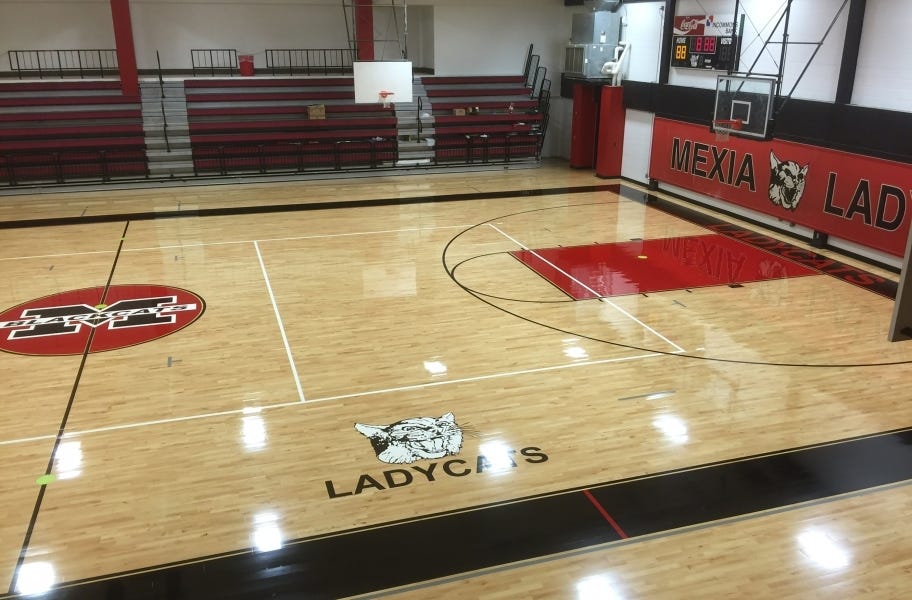
- Roll out a sports foam underlayer in the opposite direction you plan to lay the planks. Tape all seams together.
- Place the planks surface-down on the foam, and secure the connector clips into the slots on the bottoms of the planks. These clips will join the adjacent planks together.
- Use adhesive to connect the tongue and groove joints on the ends of the planks. Randomly stagger the joints for a more natural look and better stability.
- Create an expansion gap between the floors and the walls using spacers. For every 10’ of width, add ¼” to the expansion gap on both sides.
- The last row of planks should be glued to the adjacent row along the length. No other rows should be glued together.
- Finally, remove the spacers around the edges of the floor and install the trim and transition strips.
How Do You Cut Court Tiles or Planks?
It’s easy to cut court flooring to fit when you come up to walls or obstacles. All you need to do is measure the area and cut the tiles/planks with a tile cutter or table saw. Make sure you cut at a slow speed, and a fast-spinning blade could melt plastic court flooring.
When trimming the flooring to fit, make sure you leave about a 3/4” space between the floor and any vertical surfaces to allow for expansion and contraction of the floor.
How Do You Add Lines to a Court?
No court is complete without the game lines. If your court flooring doesn’t come with pre-painted lines, you can easily apply them yourself with a game line paint kit. These kits include everything you’ll need to make crisp, professional lines on your court. Just follow these steps:
- Start with a court floor that is clean and free of wax, oil, or lint. Outline where you want to apply the lines according to the sport using 3M solvent resistant masking tape.
- Apply the surface pretreatment primer to all areas that will be painted, and allow it to dry.
- Mix the paint with a power drill and paddle, and let it stand for 30 minutes before application.
- Paint the lines with a pure bristle brush or foam brush, making sure the paint is between 72° F - 75° F for the proper viscosity. Apply two thin coats for best results.
- Once the paint has dried to the tacky stage, remove all masking tape. If you wait too long, the tape may be difficult to remove and could create ragged edges.
- Allow the paint to dry. Don’t walk over it for at least 72 hours. For the first 7-10 days, only allow light traffic without footwear. It can take up to 30 days before it is ready to mop or dust the surface.
Does Court Flooring Need an Underlayment?
Underlayment isn’t required for a court, but it’s good to have. Court flooring underlayments provide extra impact absorption and support the flooring to be more durable. That helps the court last longer, and also protects players from potential injuries. Rubber is the best court underlayment, since it is durable and won’t absorb moisture, and it can be installed both under both indoor and outdoor courts.
| Related Content >> Outdoor Flooring Options |
Cleaning and Maintenance
How Do You Clean Court Flooring?
Plastic/vinyl and wood court floors require different cleaning methods. Here are the best cleaning tips for each type:
How to Clean Plastic or Vinyl Court Tiles
- Start by vacuuming or sweeping any loose dust, dirt, or debris from the floor.
- If outside, hose down the floor and let the dirt and debris drain away with the water.
- For indoor flooring, damp mop with a mild soap and water mixture for tough or caked on dirt and/or stains.
- Let the floor air dry, and then you’re ready to play!
How to Clean Wood Court Planks
- Dust mop or use a slightly damp mop to remove light dust and dirt.
- Remove sweat and any soap deposits with a manufacturer-recommend cleaner so the floor does not become slippery.
- Courts with stuck-on dirt or resins can be cleaned with a machine, following the length of the planks. A specialized dissolver can be purchased from the manufacturer for the best results. Always make sure to use soft-bristled brushes or pads.
- For long-term maintenance and damage prevention, make sure there are mats around all nearby entrances, to keep shoes from bringing in dirt and small rocks that can scratch the floor.
| Related Content >> Court Tiles vs. Court Planks |
Court Flooring Cost
How Much Does Court Flooring Cost?
Interlocking court tiles typically cost more than materials for concrete or asphalt, but the installation cost is significantly cheaper. According to HomeAdvisor, pre-painted court tiles cost around $3.50 to $4.50 per square foot in 2020.
We pride ourselves on offering industry-leading prices. We carry quality court flooring starting at less than $3.00 per square foot, as well as half court kits below the $3,200 average.
How Much Does it Cost to Install Court Flooring?
Fortunately, because court tiles and planks are so easy to install, you can do it on your own, which won’t cost you a thing.
Conclusion
Hopefully, by this point, all of your burning questions about court flooring have been answered, and you're ready to build your own court. If you still need some answers, feel free to reach out to us, and we can connect you with a flooring expert who can help.



